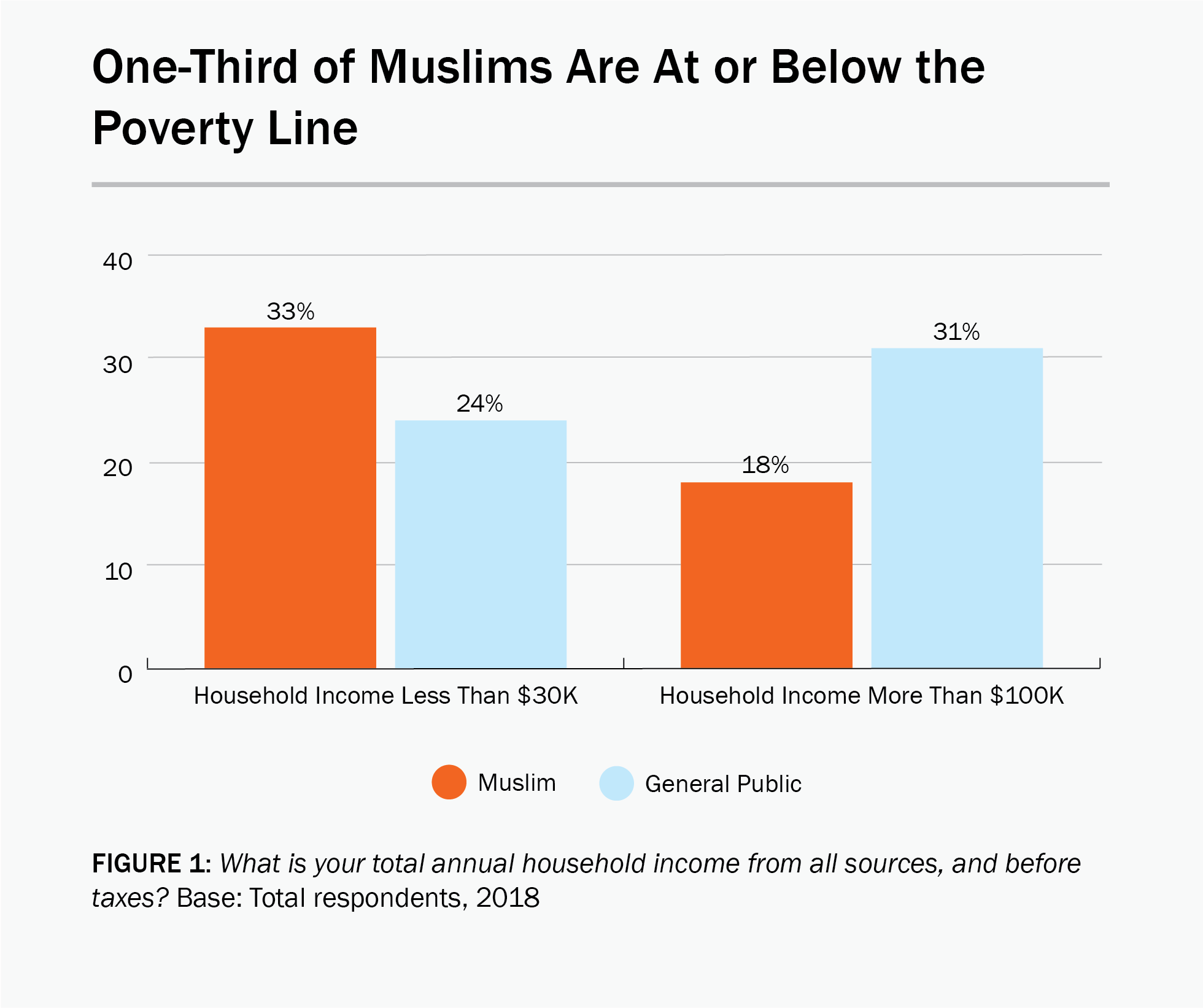by YOUSSEF CHOUHOUD

Muslims in America fare better socioeconomically than other minority Muslim populations around the globe, such as French or British Muslims, on average. This point has supported claims that American Muslims are well-integrated and “mostly mainstream.” The ever-expanding universe of successful Muslim entrepreneurs helps further this narrative.
This story, however, masks the tale of American Muslim poverty. In order to examine poverty among American Muslims, we dug deeper into the data of ISPU’s 2018 American Muslim Poll.
Even though some American Muslims are quite well-off, a significantly larger percentage of the community struggles financially. In fact, in its most recent poll, ISPU found that 18% of American Muslims report a household income above $100,000 (compared to 31% of Americans generally), but 33% make less than $30,000 (compared to 24% of Americans generally), a level at or below the federal poverty line, depending on household size.
This reality is brought into stark relief as more data emerge and scholars shine a light on the effects of economic disparity in this community.
American Muslims are incredibly diverse, so we examined the demographic factors that are correlated with low- and high-income households in ISPU’s 2018 poll to understand how communities differed. For the purposes of this analysis, “low income” corresponds to less than $30,000 while “high income” indicates those earning at least $75,000 a year (i.e., well above the median American annual income of approximately $60,000). Figure 1 plots the most relevant household-level variables linked to high or low income.
We found that, controlling for household size and geographic region, Black Muslim households are more likely than any other Muslim racial group to earn less than $30,000 a year. More racial parity exists at the higher end of the income spectrum, with Arab households only slightly more likely than other Muslims to report incomes over $75,000.
